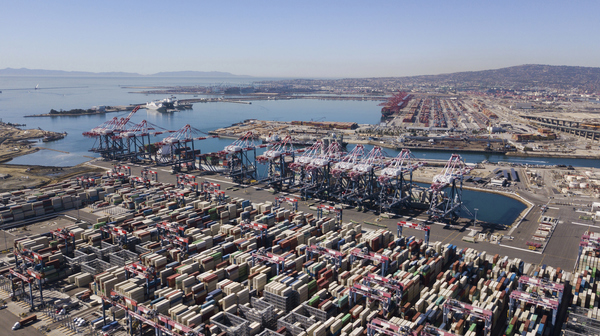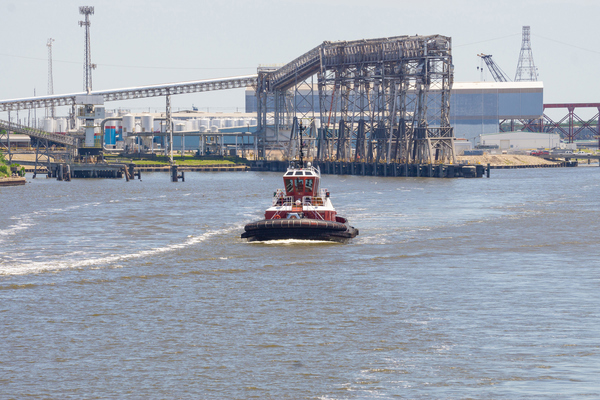Americas Market Update 4 Nov 2025
Fuel prices have mostly tracked Brent's downward movement, and rough weather conditions can delay bunkering operations in New York Harbour.
 IMAGE: The Statue of Liberty seen from New York Harbor. Getty Images
IMAGE: The Statue of Liberty seen from New York Harbor. Getty Images
Changes on the day to 03.00 CST (9.00 GMT) today:
- VLSFO prices down in Houston ($15/mt), New York ($7/mt), Zona Comun ($3/mt), Los Angeles ($2/mt) and Balboa ($1/mt)
- LSMGO prices up in Balboa ($18/mt), and down in Houston ($9/mt), Zona Comun ($5/mt), New York ($2/mt) and Los Angeles ($1/mt)
- HSFO prices up in Balboa ($14/mt), and down in New York ($2/mt), Los Angeles and Houston ($1/mt)
Balboa’s HSFO and LSMGO price benchmarks have defied both Brent’s downward movement and the general market direction, being the only two benchmarks to have moved up in the past day.
While the port’s HSFO has risen by $14/mt, the price of VLSFO has fallen by $1/mt, narrowing the port’s Hi5 spread to $25/mt today, down from $32/mt on Monday.
Houston’s VLSFO price benchmark recorded the largest losses and is now at a discount of $47/mt to New York, widening the discount it held a month ago at $36/mt.
Bunker demand in Houston has remained stable, though HSFO has been in short supply, with lead times reported at 7–8 days. VLSFO and LSMGO have typically been offered with 5–6 days of lead time over the past week.
On the East Coast port of New York, weather conditions have started to worsen again, with port authorities issuing a small craft advisory through Tuesday afternoon.
This is expected to restrict barge movements at the anchorage, leading to delays in bunkering, a source said.
Brent
The front-month ICE Brent contract has moved $0.55/bbl lower on the day, to trade at $64.11/bbl at 03.00 CST (9.00 GMT) today.
Upward pressure:
Energy-related sanctions on Russia have provided some upward pressure on Brent’s price in recent days.
Last month, the US Department of the Treasury’s Office of Foreign Assets Control (OFAC) targeted Rosneft and Lukoil, including a total of 34 subsidiaries belonging to both companies.
Both companies export around a combined 3 million b/d of crude oil, or about “55% of Russia’s crude and condensate supply,” according to ANZ Bank’s senior commodity strategist Daniel Hynes.
The move came one week after UK targeted the same companies, 44 shadow fleet vessels and Indo-Russian oil refiner Nayara Energy, along with a ban on oil products made from Russian crude in third countries.
Downward pressure:
Eight members of the OPEC+ coalition have agreed to raise their combined output by another 137,000 b/d in December – the eighth straight month of planned production hikes.
The decision has put downward pressure on Brent’s price, as signals of further supply additions typically pressure the market in an already oversupplied environment.
“OPEC is aware of the impact its rising output will have on the market,” Hynes said.
Besides, concerns over oil demand growth have capped Brent’s price today. The Manufacturing Purchasing Managers' Index (PMI) reading in the US and China – the world’s biggest oil consumers – came in at 48.7% and 49% respectively in October.
A PMI reading below 50 indicates a contraction in manufacturing activity — a key gauge of economic health that underscores market concerns over weaker industrial output, which could weigh on oil demand through the rest of the year.
By Gautamee Hazarika and Aparupa Mazumder
Please get in touch with comments or additional info to news@engine.online

Contact our Experts
With 50+ traders in 12 offices around the world, our team is available 24/7 to support you in your energy procurement needs.




